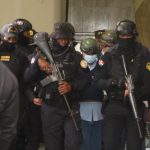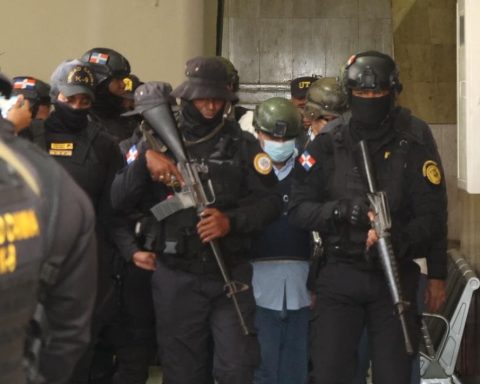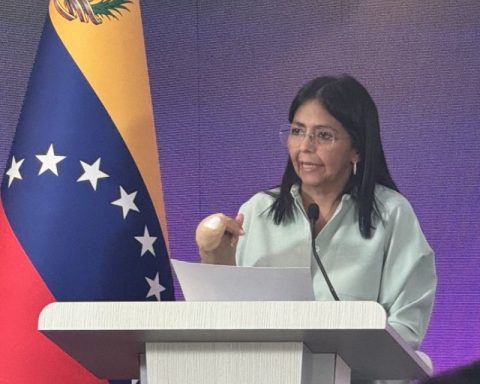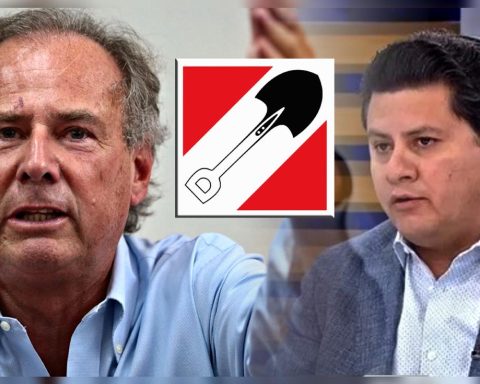May 17, 2023, 9:01 AM
May 17, 2023, 9:01 AM
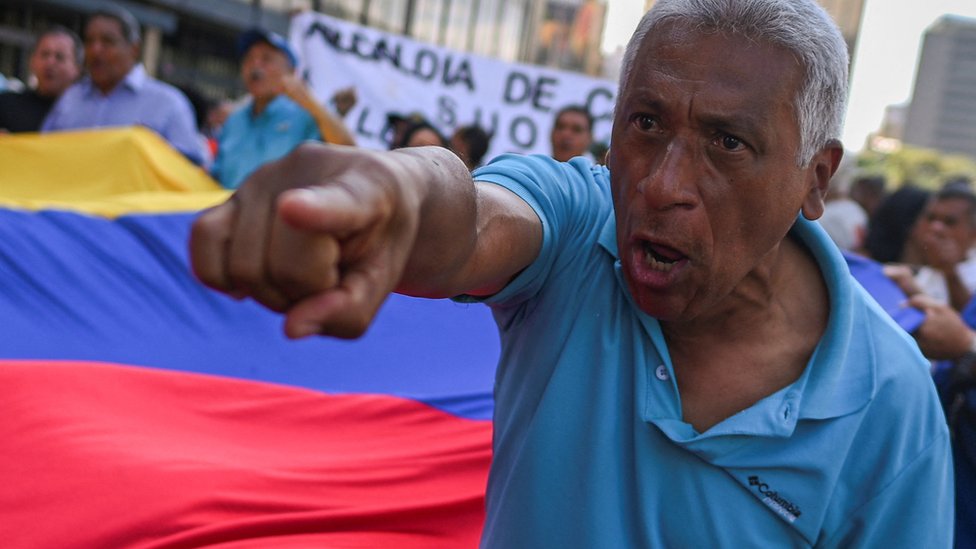
Venezuela was not fixed. The slight recovery that the country experienced from 2021 came to a dead stop during the first months of this year and there are fears of a new recession.
Between 2014 and 2020, the country lived a dand the sharpest contractions that has faced an economy in the world by losing 75.5% of its Gross Domestic Product (GDP).
Until in 2021 the economy registered a slight upturn, which was due to the recovery of oil production and the consumption boom.
After seven years of negative numbers, the country experiment a growth that reached 13.3%according to the Venezuelan Finance Observatory (OVF).
And some Venezuelans began to see light.
“Last December we saw scenes that we had not witnessed for a long time,” Alexa Gómez, a lawyer who lives in Caracas, told BBC Mundo. “Many people on the streets. But, above all, many people buying. There was a certain calm. There was a false belief of improvement.”
That mirage was fueled by the opening of large imported clothing stores, luxury cars, the resumption of cultural events, the reactivation of concerts by international artists, and the rampant opening of high-end restaurants, such as the one that sold a suspended experience. on a crane.
But, starting this year, that feeling of prosperity is gone.
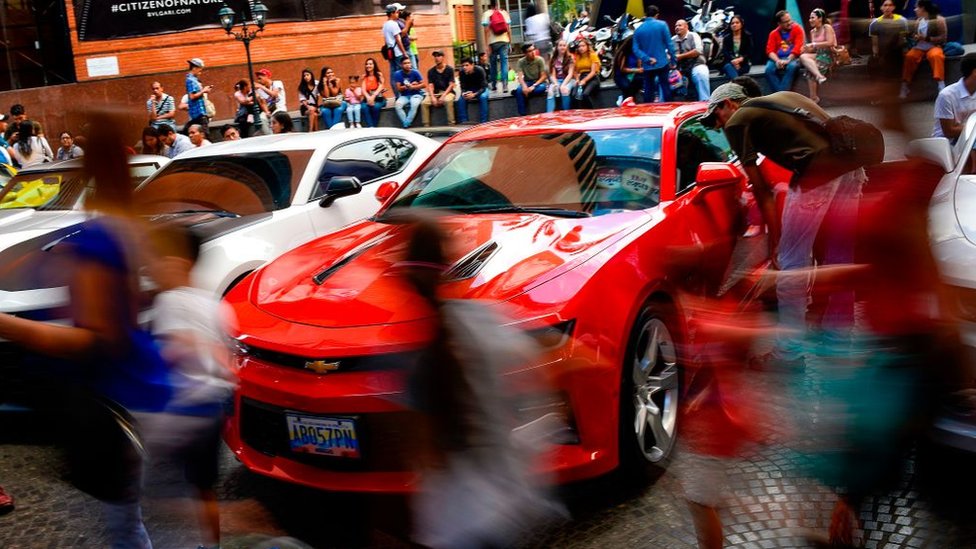
“Now you see little influx in Las Mercedes,” says Gómez, who refers to an area in the east of the capital, characterized by the presence of bars, restaurants and nightclubs. “Empty shops and restaurants. Shops doing auctions. Many anguished people and desperate merchants,” she says.
The figures confirm this. Last February, the IMF (International Monetary Fund) announced that real GDP growth in Venezuela during 2023 would be 6.5%. A projection that was later corrected downward to 5.0%.
Data from the Venezuelan Finance Observatory (OVF) now reveals that, during the first quarter of 2023, economic activity registered a drop of 8.3% compared to the previous period.
Inflation, according to the IMF, aims to close at 400%.
The government continues to blame the economic problems on US sanctions, but what is behind this economic slowdown? Here we explain four factors.
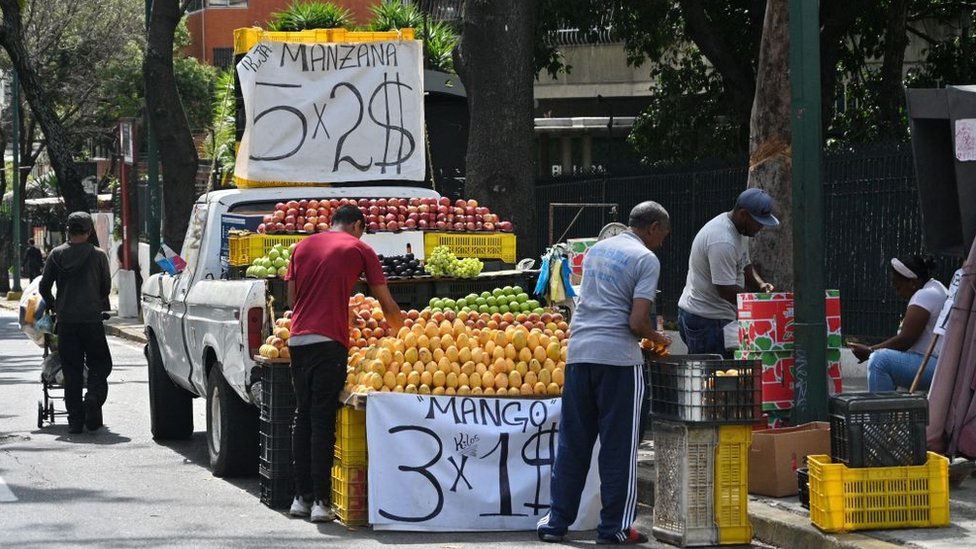
1. The limits of disorderly dollarization
Transactions in Venezuela had always been made in bolivars. But the hyperinflation that took place in 2017 and lasted for four years diluted the value of the official currency so much that the bills ended up serving more to decorate than to buy.
In response, Venezuelans began using the dollar to make their payments. At first, in an informal, almost clandestine way, due to the criminal consequences implied by the use of foreign currency since the time of Hugo Chávez.
Until the government of Nicolás Maduro in 2018 it allowed businesses to openly announce their prices in dollars, which paved the way for de facto dollarization.
The use of a more stable currency injected some certainty into the market, boosted private sector activity and gave even the lower classes a breather. However, the absence of regulations for its implementation prevented dollarization from being effective.
“Dollarization in Venezuela was a spontaneous process. It was not a state economic policy“, explains the economist Giordio Cunto. “It was done in a disorderly way and outside the financial institutions. This further complicated the payment system in the country.”
Customers pay with dollars in cash, but merchants do not have low-denomination bills to make change. And transactions are made through friends or relatives in the United States given the impossibility of Venezuelans to move dollars between accounts in local banks.
In March 2022, the government totried a reform to the Law of Large Financial Transactions (IGTF), which implied a 3% tax on foreign currency operations carried out by natural and legal persons. A measure that discouraged the use of the dollar.
“After seven years of recession, the country’s economy was neither prepared nor strong enough for this tax burden,” says economist José Manuel Puentes. “It was a wrong economic decision, which had a cooling impact,” he adds.
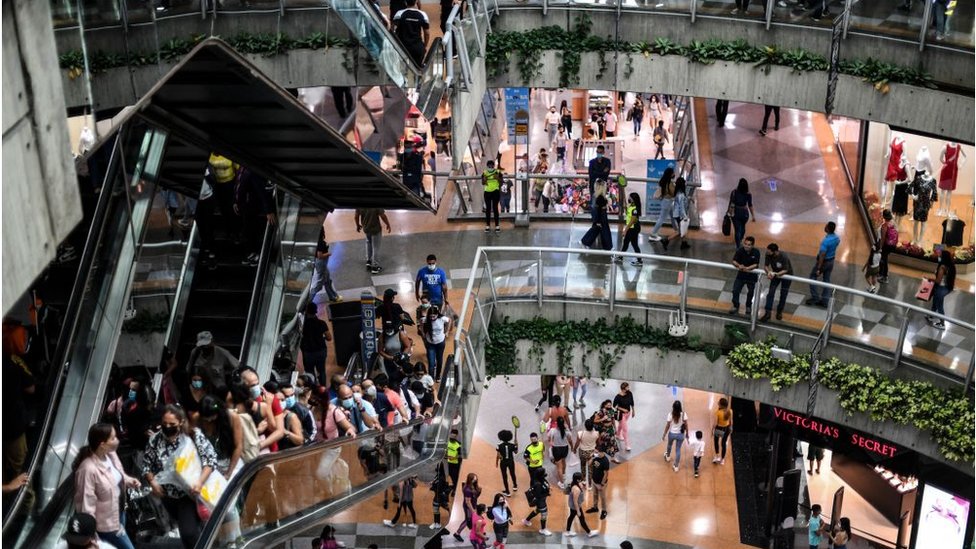
In his opinion, the Maduro government implemented dollarization incorrectly and then wanted to re-impose the use of the bolivar.
“He applied a stop and go, start and stop technique, which had an impact on the transactions. In the end, the lack of economic stabilization measures on the part of the ggovernment made dollarization less effective“.
2. Dependence on the commercial sector
The rebound experienced by the Venezuelan economy was limited, because it was leveraged in only one productive sector: commerce and services.
According to figures published by Bloomberg, 200 restaurants opened in the capital last year, the most in at least a decade. Almost half were aimed at a public with high purchasing power, with the ability to pay more than US$50 per meal.
But he upturn of inflation,next to the abrupt 25% devaluation that occurred in August 2022, it discouraged consumption and shops emptied.
“The revitalization of the economy on which this rebound was based was very unbalanced,” explains Cunto.
“It did not involve other more productive sectors with higher added value such as construction, mining, manufacturing, which lagged behind. That was not sustainable, because it was driven by consumption. As consumption fell, the rebound ran out of fuel“.
The figure revealed by Iván Puerta, president of the Restaurant Association, in an interview published by Bloomberg shows the dimension of the disaster: about 60% of new food outlets closed after an initial over-enthusiasm.
Consequently, the contraction of commercial sales compared to January last year was 17%, according to the economist Asdrúbal Oliveros. “In economic terms it is the worst contraction in the last three years,” he says.
In his opinion, there was another factor that also had a negative effect on consumption: the 15% drop in remittances as a result of the post-post crisisnoof mesince three out of every ten households in Venezuela depend on the foreign currency sent by their relatives who live abroad.
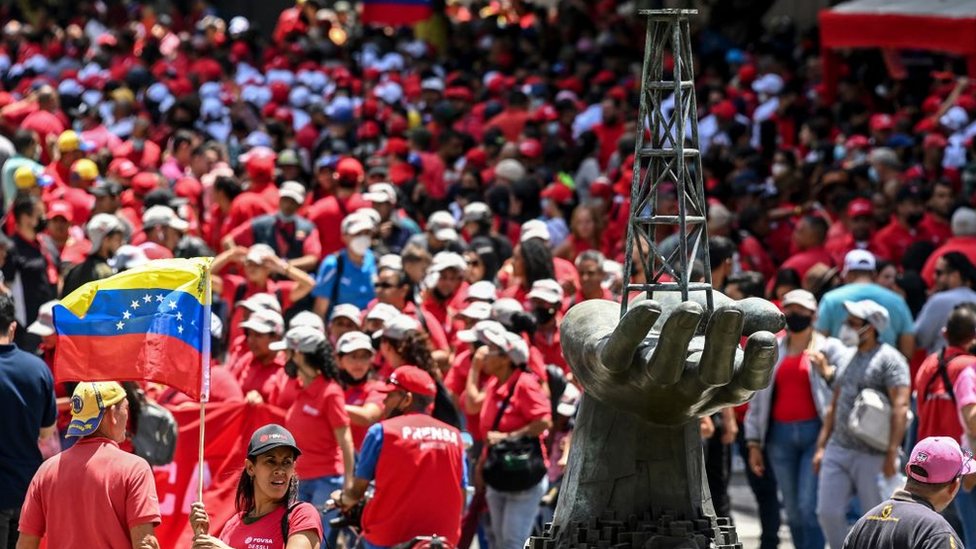
3. The difficulty of selling oil
During the first half of 2022, Venezuela’s oil production registered a rebound, due to the recovery of the activity of its main company: PDVSA.
After being at the lowest levels in its history, The state oil company reached 735,000 barrels per day in May of that yearaccording to OPEC figures.
This impulse represented an incentive for a strategic sector of the Venezuelan economy that had been affected by the sanctions ordered by the government of Donald Trump and the loss of control of oil assets in the United States.
In the middle of that scenario, Russia’s invasion of the Ukraine opened up the opportunity for Venezuela to sell more crude.
However, the country failed to take full advantage of it.
“That conflict had a net positive effect on Venezuela because it was an oil country, but it could not get more out of it because of your current inability to increase your production“says José Manuel Puentes, who recalls that PDVSA in the past produced three million barrels per day.
By the way, the sanctions on Russia they disrupted Venezuela’s reduced ability to market its oil. A circumstance that, in the eyes of the government, resulted in difficulties in obtaining more foreign currency.
In parallel, another factor played against them: the problems of coppereither.
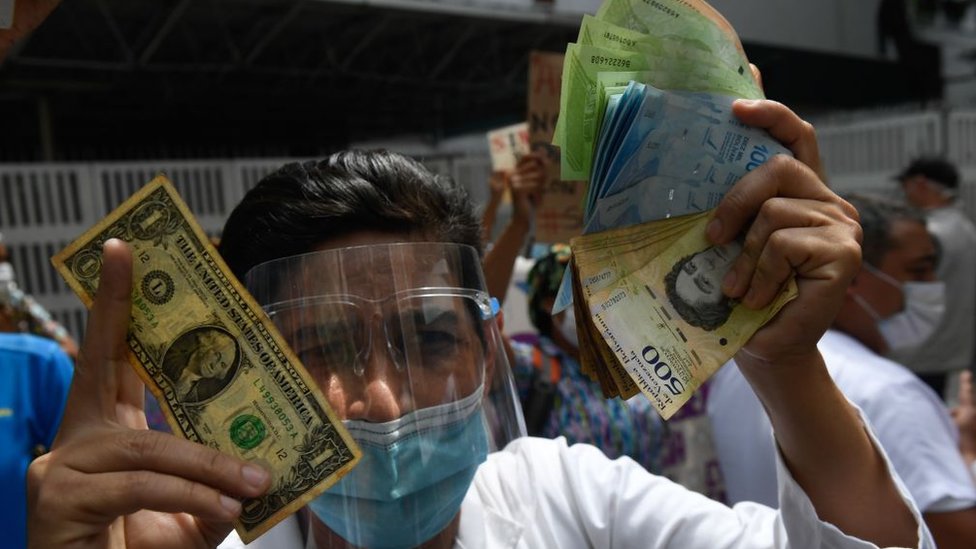
“Venezuela sells its oil in very opaque conditions,” says Cunto. “Not all of the value ends up arriving in the country, which makes it difficult to access the resources that the government can count on.”
That lack of liquidity, in the end, prevented the Maduro administration from keeping the foreign exchange market under control. In addition to its low international reserves.
And given the decline in income, expanding the bolivar ended up being the way out.
4. The persistence of structural problems
The short duration of the economic rebound experienced by Venezuela responds, in the opinion of specialists, to the persistence of the country’s structural problems.
“In an economy with a deep structural crisis like that of Venezuela, allto improvement has a roof“, says the economist Asdrúbal Oliveros.
“We have a collapsed State that cannot generate income. A sanctioned economy that keeps the country isolated. Without the possibility of credit. With public service problems… In this scenario, any sign of improvement is diluted.”Add.
Much agrees in affirming that the strength of the economic recovery was very tenuous, because it did not have a solid base. He even thinks that the mistake was overestimating the recoverybased on the expectations that it was generating in the population.
“We have a very unproductive, uncompetitive economy. This limits its growth and diversification,” he adds.
A not so bleak future
What to expect in the coming months?
The economist José Manuel Puentes is not very optimistic.
“If we register negative numbers again in the April, May and June quarters, we will technically enter a recession, based on in unofficial figures. that is very worrying“, he comments.
Oliveros, on the other hand, considers that, although it is in a slowdown scenario, he does not believe that the country will return to the economic crisis it experienced in 2017.
“Now we have a dollarized economy. A private sector that has gained independence and a more pragmatic government. We will have a less bad second semester and we could close the year with 5% growth. But it will depend on whether we start to see signs of stabilization.”
That vision is shared by Cunto, who assures that the economic slowdown will continue to be felt, but without bordering on a critical picture. “There is still a lot of vulnerability in monetary policy, since it does not move independently but is tied to the Executive. Thus, we will not grow more than 5% at the end of this year.”
With this outlook, he suggests being more conservative in terms of the magnitude of the rebound and exploring higher productivity activities. “You have to be more agile to adapt to the conditions of this highly volatile environment. The truth is that we cannot trust a quantum leap.”
Remember that you can receive notifications from BBC News World. Download the latest version of our app and activate them so you don’t miss out on our best content.






